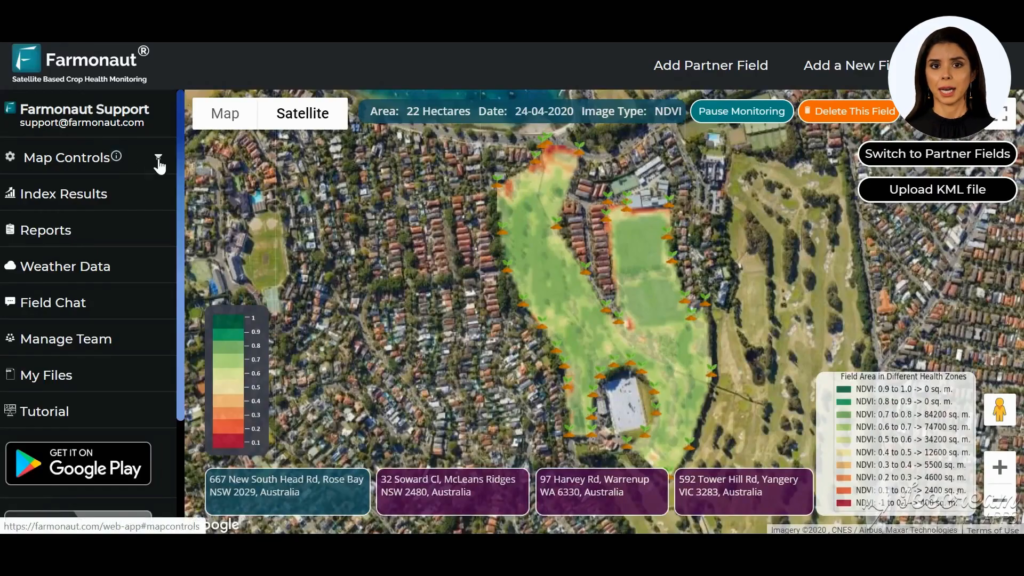
Have you ever wondered why some fields thrive while others struggle? The answer lies beneath the surface – in soil organic carbon (SOC). This crucial component is the key to healthier, more productive farms and sustainable agriculture. Let’s dive into why SOC is so important and how you can harness its power for your farm.
🌱 What is Soil Organic Carbon and Why Does it Matter?
Soil organic carbon is the carbon stored in soil organic matter. It plays a vital role in:
- Enhancing soil fertility
- Improving soil structure and aeration
- Increasing water retention capacity
- Sequestering carbon from the atmosphere
- Promoting a stable carbon cycle
- Boosting overall agricultural productivity
Understanding and managing SOC levels is crucial for maintaining good soil organic matter percentage and ensuring long-term soil health. By focusing on how to improve organic carbon in soil, farmers can create a more resilient and productive agricultural system.

🔬 The Science Behind Soil Organic Carbon
The estimation of soil organic carbon is a key practice for assessing soil health. Scientists and agronomists use various methods to measure SOC levels, including:
- Laboratory analysis of soil samples
- Remote sensing techniques
- Predictive modeling
These methods help determine how much organic carbon should be in soil for optimal productivity. The good soil organic matter percentage typically ranges from 3-5%, but this can vary depending on soil type and climate.
🌍 Global Impact: Crop Production and Climate Change
Increasing soil organic carbon doesn’t just benefit individual farms – it has a global impact. Research has shown that global crop production increase by soil organic carbon can be significant. By sequestering carbon in the soil, we can:
- Mitigate climate change effects
- Improve food security
- Enhance ecosystem resilience

🚜 Practical Steps: How to Increase Carbon in Soil
Now that we understand the importance of SOC, let’s explore some practical ways to increase carbon in soil:
- Implement no-till or reduced tillage practices
- Use cover crops to protect and enrich the soil
- Practice crop rotation to diversify soil inputs
- Apply organic amendments like compost or manure
- Manage crop residues effectively
- Use precision agriculture techniques to optimize inputs
These practices not only help improve organic carbon in soil but also contribute to overall soil health and sustainability.
📊 Monitoring SOC with Advanced Technology
Thanks to advancements in technology, farmers now have powerful tools at their disposal for monitoring and managing SOC levels. Farmonaut, a leader in agricultural technology, offers innovative solutions for real-time SOC monitoring:
- Advanced satellite technology for field-level insights
- AI-powered app for personalized recommendations
- Precise data analysis for informed decision-making

By leveraging these tools, farmers can make data-driven decisions to optimize their soil management practices and boost productivity.
🌐 Global Impact: Farmonaut’s Expansion
Farmonaut’s commitment to sustainable agriculture extends beyond technology. In 2022-2023, the company expanded its satellite services to Rwanda and Kenya, partnering with local farmers to address climate challenges through sustainable practices. This global approach demonstrates the far-reaching potential of SOC management in combating climate change and improving food security worldwide.
🚀 Take Action: Elevate Your Farm’s Potential
Ready to unlock the power of soil organic carbon on your farm? Here’s how you can get started:
- Visit farmonaut.com to learn more about their advanced SOC monitoring tools
- Implement SOC-boosting practices on your farm
- Stay informed about the latest research and techniques for soil health management
- Connect with other farmers and experts to share knowledge and experiences
By focusing on soil organic carbon, you’re not just improving your farm’s productivity – you’re contributing to a more sustainable and resilient agricultural future.
FAQs About Soil Organic Carbon
Q: What is a good soil organic matter percentage?
A: A good soil organic matter percentage typically ranges from 3-5%, but this can vary depending on soil type and climate conditions.
Q: How can I estimate soil organic carbon on my farm?
A: You can estimate soil organic carbon through laboratory analysis of soil samples, remote sensing techniques, or by using advanced tools like Farmonaut’s satellite-based monitoring system.
Q: What are some quick ways to increase carbon in soil?
A: Some quick ways to increase carbon in soil include implementing no-till practices, using cover crops, applying organic amendments, and managing crop residues effectively.
Q: How does increasing soil organic carbon impact crop yields?
A: Increasing soil organic carbon can lead to improved soil structure, better water retention, enhanced nutrient availability, and ultimately, higher crop yields.
Q: Where can I find more resources on soil organic carbon management?
A: You can find more resources on soil organic carbon management through agricultural extension services, research institutions, and technology providers like Farmonaut.
Remember, healthy soils are the foundation of sustainable agriculture. By focusing on soil organic carbon, you’re investing in the long-term health and productivity of your farm. Start your journey towards better soil management today!





